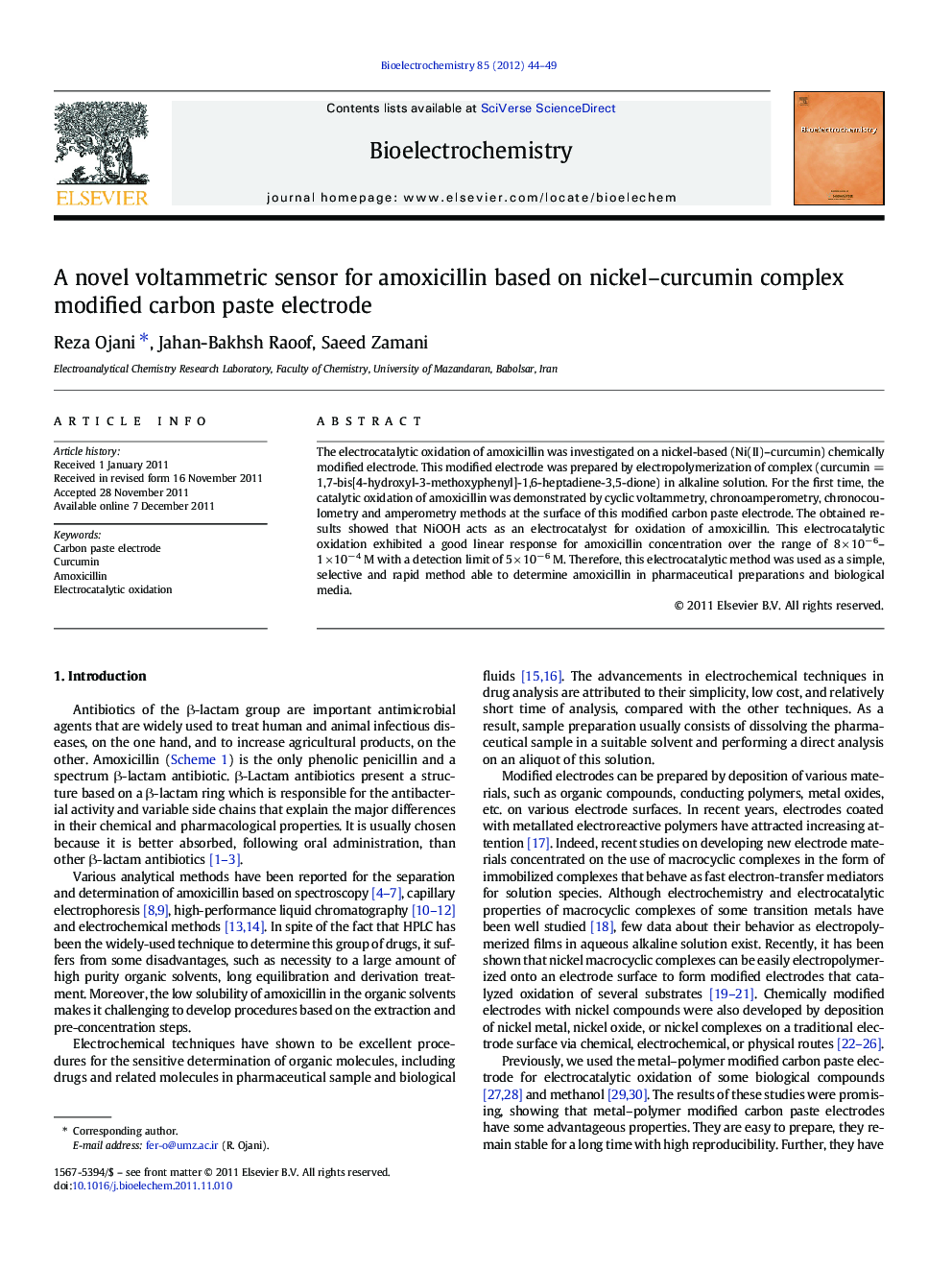| Article ID | Journal | Published Year | Pages | File Type |
|---|---|---|---|---|
| 1267252 | Bioelectrochemistry | 2012 | 6 Pages |
The electrocatalytic oxidation of amoxicillin was investigated on a nickel-based (Ni(II)–curcumin) chemically modified electrode. This modified electrode was prepared by electropolymerization of complex (curcumin = 1,7-bis[4-hydroxyl-3-methoxyphenyl]-1,6-heptadiene-3,5-dione) in alkaline solution. For the first time, the catalytic oxidation of amoxicillin was demonstrated by cyclic voltammetry, chronoamperometry, chronocoulometry and amperometry methods at the surface of this modified carbon paste electrode. The obtained results showed that NiOOH acts as an electrocatalyst for oxidation of amoxicillin. This electrocatalytic oxidation exhibited a good linear response for amoxicillin concentration over the range of 8 × 10−6–1 × 10−4 M with a detection limit of 5 × 10−6 M. Therefore, this electrocatalytic method was used as a simple, selective and rapid method able to determine amoxicillin in pharmaceutical preparations and biological media.
► A nickel-based (Ni(II)-curcumin) chemically modified electrode was prepared. ► Electrocatalytic oxidation of amoxicillin was investigated on modified electrode. ► Preparation of our modified electrode is very simple, easy and cheap. ► Up to now, electrocatalytic oxidation of amoxiciline wasn't reported in literatures.
